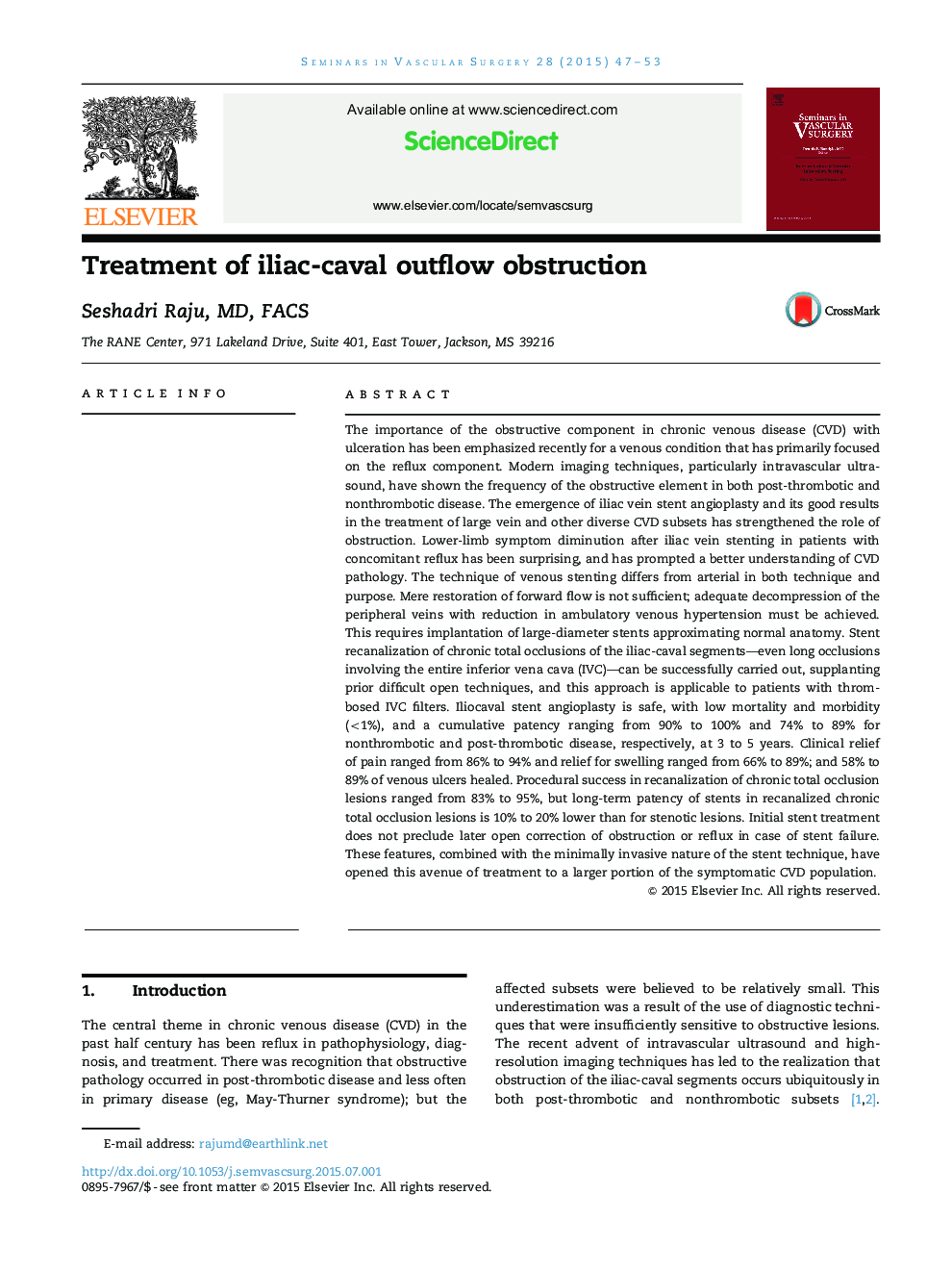| کد مقاله | کد نشریه | سال انتشار | مقاله انگلیسی | نسخه تمام متن |
|---|---|---|---|---|
| 3026130 | 1182861 | 2015 | 7 صفحه PDF | دانلود رایگان |
The importance of the obstructive component in chronic venous disease (CVD) with ulceration has been emphasized recently for a venous condition that has primarily focused on the reflux component. Modern imaging techniques, particularly intravascular ultrasound, have shown the frequency of the obstructive element in both post-thrombotic and nonthrombotic disease. The emergence of iliac vein stent angioplasty and its good results in the treatment of large vein and other diverse CVD subsets has strengthened the role of obstruction. Lower-limb symptom diminution after iliac vein stenting in patients with concomitant reflux has been surprising, and has prompted a better understanding of CVD pathology. The technique of venous stenting differs from arterial in both technique and purpose. Mere restoration of forward flow is not sufficient; adequate decompression of the peripheral veins with reduction in ambulatory venous hypertension must be achieved. This requires implantation of large-diameter stents approximating normal anatomy. Stent recanalization of chronic total occlusions of the iliac-caval segments—even long occlusions involving the entire inferior vena cava (IVC)—can be successfully carried out, supplanting prior difficult open techniques, and this approach is applicable to patients with thrombosed IVC filters. Iliocaval stent angioplasty is safe, with low mortality and morbidity (<1%), and a cumulative patency ranging from 90% to 100% and 74% to 89% for nonthrombotic and post-thrombotic disease, respectively, at 3 to 5 years. Clinical relief of pain ranged from 86% to 94% and relief for swelling ranged from 66% to 89%; and 58% to 89% of venous ulcers healed. Procedural success in recanalization of chronic total occlusion lesions ranged from 83% to 95%, but long-term patency of stents in recanalized chronic total occlusion lesions is 10% to 20% lower than for stenotic lesions. Initial stent treatment does not preclude later open correction of obstruction or reflux in case of stent failure. These features, combined with the minimally invasive nature of the stent technique, have opened this avenue of treatment to a larger portion of the symptomatic CVD population.
Journal: Seminars in Vascular Surgery - Volume 28, Issue 1, March 2015, Pages 47–53
